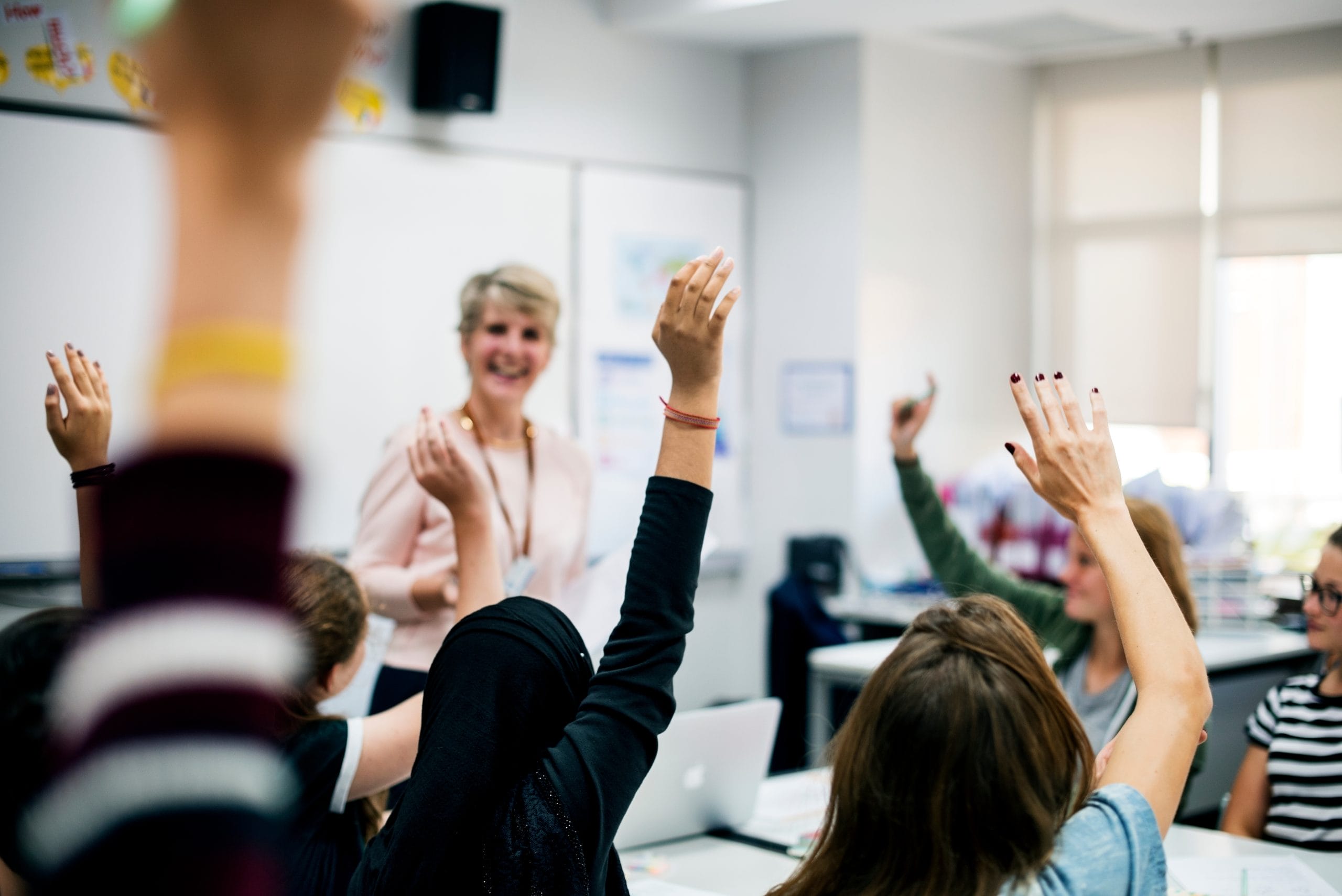
Let’s take a moment to do an activity. Please read each step carefully and complete that action before moving onto the next one.
- Collect the following materials: a blank sheet of paper, a timer (on your watch, cell phone or computer) and a writing utensil.
- Take a moment to trace the outline of your hand. It does not need to be perfect. A simple outline will do.
- Set your timer for 3 minutes.
- Press start.
- Use the outline of your hand to create a self-portrait.
I’ll be here when you’re done!
When your timer marks the end of three minutes, I hope you take a moment to admire your work and consider the process that led to whatever brilliant creation you came up with. I’ve been using this warmup exercise with several teaching and administrative teams in the schools that I am coaching this year, and the results have been fascinating.
It’s amazing to see the literal and creative twists that people take with their self-portraits. Their preferences truly come to life as they build on the outline of their hands and come up with all sorts of drawings and/or words that are entirely unique and still meet the objective. I’m often impressed by those who launch right into action – maybe because I approach work so differently. I’ve also found that some of my participants have been stumped, staring at the outline of their hand until the time runs out.
There are many reasons for this outcome – and they almost never have to do with a lack of motivation. Maybe the person has a committee brain with a preference for three or more Thinking Attributes, and they couldn’t land on a decision. Perhaps the directions felt too vague, so they were stuck. Or maybe they were still in ideation.
While this activity is a fun example, the outcome is something that many educators can relate to. Just think about the last time you asked your class to work on a task for 15 minutes, and as you’re walking around the room at the end of the period, there is a student who hasn’t written down a single thing.
It can be a frustrating experience – for the student and the teacher alike. Still, there’s always a reason for it. As educators, we have an opportunity to help youth recognize there is likely a cause for their pause and identify strategies to keep going even when challenges arise.
One effective way to build perseverance is to take a strengths-based approach. Using your students’ Emergenetics Youth Reports, you can help kids gain awareness of their innate brilliances and use them as a guide to persist through perplexing moments.
Thought Starters to Articulate Their Needs
When you notice that one of your students is having difficulty with an assignment, take a moment to reference their Youth Report and encourage them to look at it too. By understanding their preferred Thinking combinations and Behaviors, learners can recognize what gives them energy and what might be missing from the task that’s causing them frustration.
![]() Convergent Thinking (Analytical and Structural preferences)
Convergent Thinking (Analytical and Structural preferences)
Students with a preference for Convergent thinking tend to feel most directed when they have logical, clear action steps and a good reason why they are completing the task. If youth who enjoy this thinking combination are struggling, prompt them with questions such as:
- Do you understand the purpose of the learning target?
- Is there something about the process that’s unclear?
![]() Divergent Thinking (Social and Conceptual preferences)
Divergent Thinking (Social and Conceptual preferences)
Divergent thinkers often work best when they have an opportunity to brainstorm about their approach, consider possibilities and connect with others about their ideas. If learners with this preference are not able to move forward, provide them with prompts like:
- Would a change of scenery help clear your head?
- Would it be beneficial to share your ideas with me or a classmate?
![]() Abstract Thinking (Analytical and Conceptual preferences)
Abstract Thinking (Analytical and Conceptual preferences)
For big picture thinkers, motivation tends to come from having an opportunity to engage with unique ideas that serve a valuable purpose. When learners with this preference get stuck, offer some thought starters like:
- Do you see the value of this exercise?
- Is there something different you could do to inspire your next steps?
![]() Concrete Thinking (Structural and Social preferences)
Concrete Thinking (Structural and Social preferences)
Youth who prefer Concrete thinking often feel most directed when they have a clear understanding of success and can work with or through others. To support these students, try asking questions such as:
- Do you understand the expectations for this assignment?
- Would it be helpful to discuss your next steps with someone else?
![]() Expressiveness
Expressiveness
When students are feeling frustrated, you can encourage them to lean into their Expressiveness preferences by offering ideas to process their opinions and feelings. Some ideas could include writing down their thoughts to formulate their approach, which may appeal to first-third Expressiveness, or talking to a classmate or creating a word cloud of ideas, which may speak to third-third Expressiveness.
![]() Assertiveness
Assertiveness
Assertiveness explains the pace that different learners will want to accomplish their work. To help kids persevere, you can encourage them to pick a place to start where they feel they can make quick progress. Those quick wins can inspire next steps, especially for third-third Assertiveness. For those in the first-third of Assertiveness, you can offer ideas like identifying milestones to make incremental progress.
 Flexibility
Flexibility
Using the lens of Flexibility, encourage students to consider the loose and tight expectations of the assignment. For third-third Flexibility, the limits can help them narrow ideas and discover where they have freedom in other areas, while first-third Flexibility can use the focused options to set a direction and stick with it.
Moving Forward
Helping your students recognize what they need to succeed is vital, and it’s even more powerful when kids can advocate for themselves. When youth have the self-awareness to understand when they need help and verbalize what actions or information will allow them to move forward, they will be better equipped to keep at it rather than give into frustrations.
No matter what preferences your students have, when they are struggling, encourage them to:
- Name and note how they are feeling.
That way, youth can get better at recognizing their emotions in the future. - Identify what information or actions helped them feel like they could take the next step.
That way, learners can start to build a list of strategies that support their perseverance. - Ask for what they need.
That way, kids practice self-advocacy by articulating what they need to keep moving forward.
When your students have the tools to understand and convey what will motivate them to persist, you can enhance your students’ social-emotional learning, which will support their academic achievements, mental wellness and success beyond the classroom.
Learn how STEP can support your students build self-awareness and self-advocacy. Explore our website or fill out the form below to speak with a team member today!
 Print This Post
Print This Post
